- TOP
- NITTA DuPont’s Technologies and People
- R.Y. / Slurry Development Section 2 Slurry Development Department, Technology Division
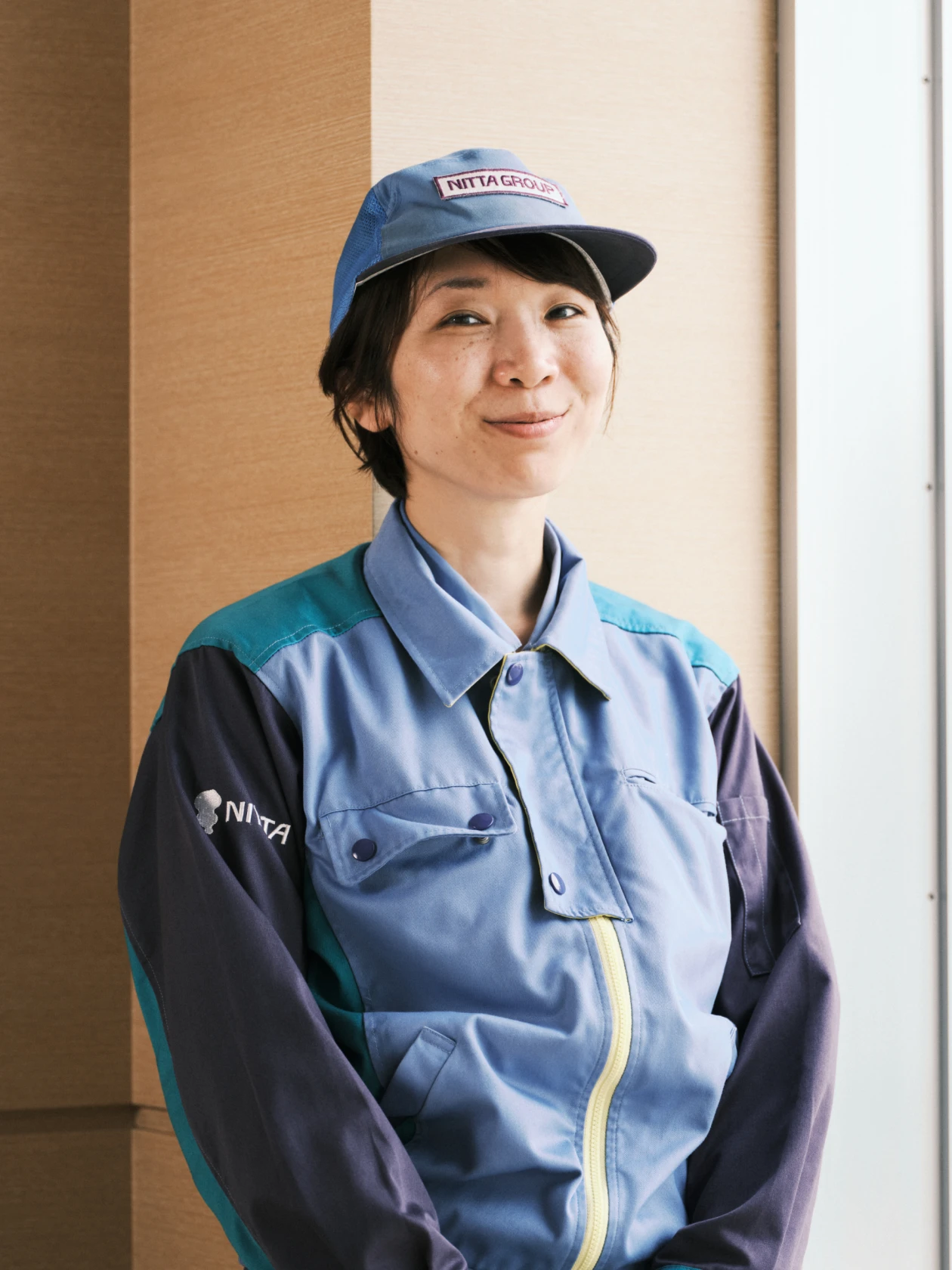
Making each and every staff member a central player, led by a dedication to development
Slurry Development Department, Technology Division
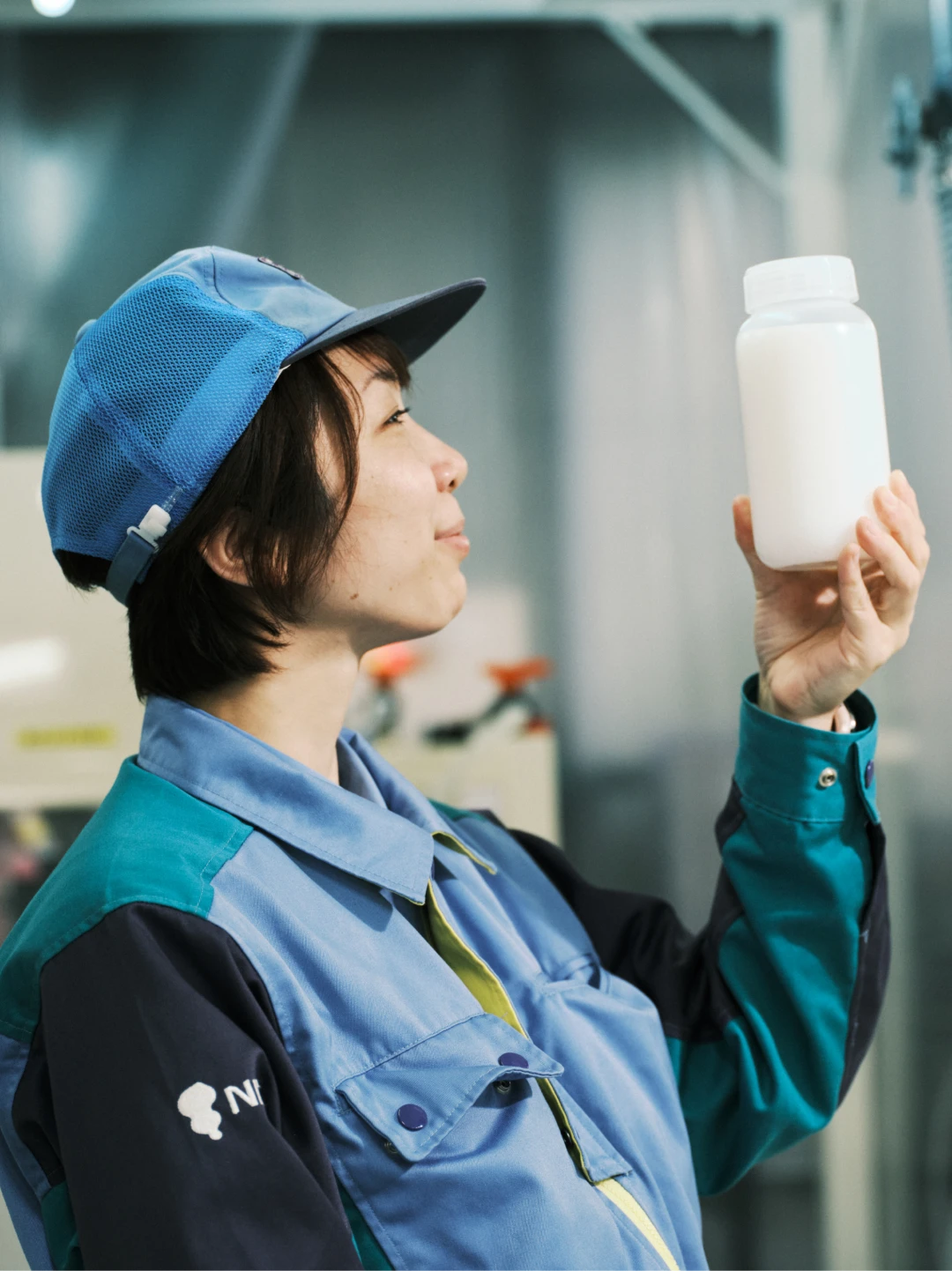
After graduating from university, I couldn’t forget the joy I felt in research and development, so even after entering the workforce, I wanted to work in development. I had my whole life ahead of me, and I didn’t want to give up on my dream, so I talked with a friend from university about what to do, and they introduced me to the company where they were working: NITTA DuPont. I was finally able to work in a technical development position, which I’d longed to do for so long. I work in Slurry Development Section 2, in the Slurry Development Department, where I develop polishing slurry for the silicon wafers that serve as the substrates of semiconductors. My friend works in Slurry Development Section 1, developing polishing slurry for devices.
Our sales staff and application engineers gather requests from customers regarding performance improvements or problems, and we develop products based on them. But we don’t simply act on every request. Instead, our company’s policy is to first have the marketing department decide whether or not to go forward with development, and then narrow down the project candidates to high priority projects. Then we allocate development resources to those projects. Based on our current product lineup, they look at marketability and profitability. We don’t use a high-mix, low-volume approach. Due in part to that, the projects we work on are major business projects, and we strongly believe that development is our mission, both from a social standpoint and from a company standpoint.
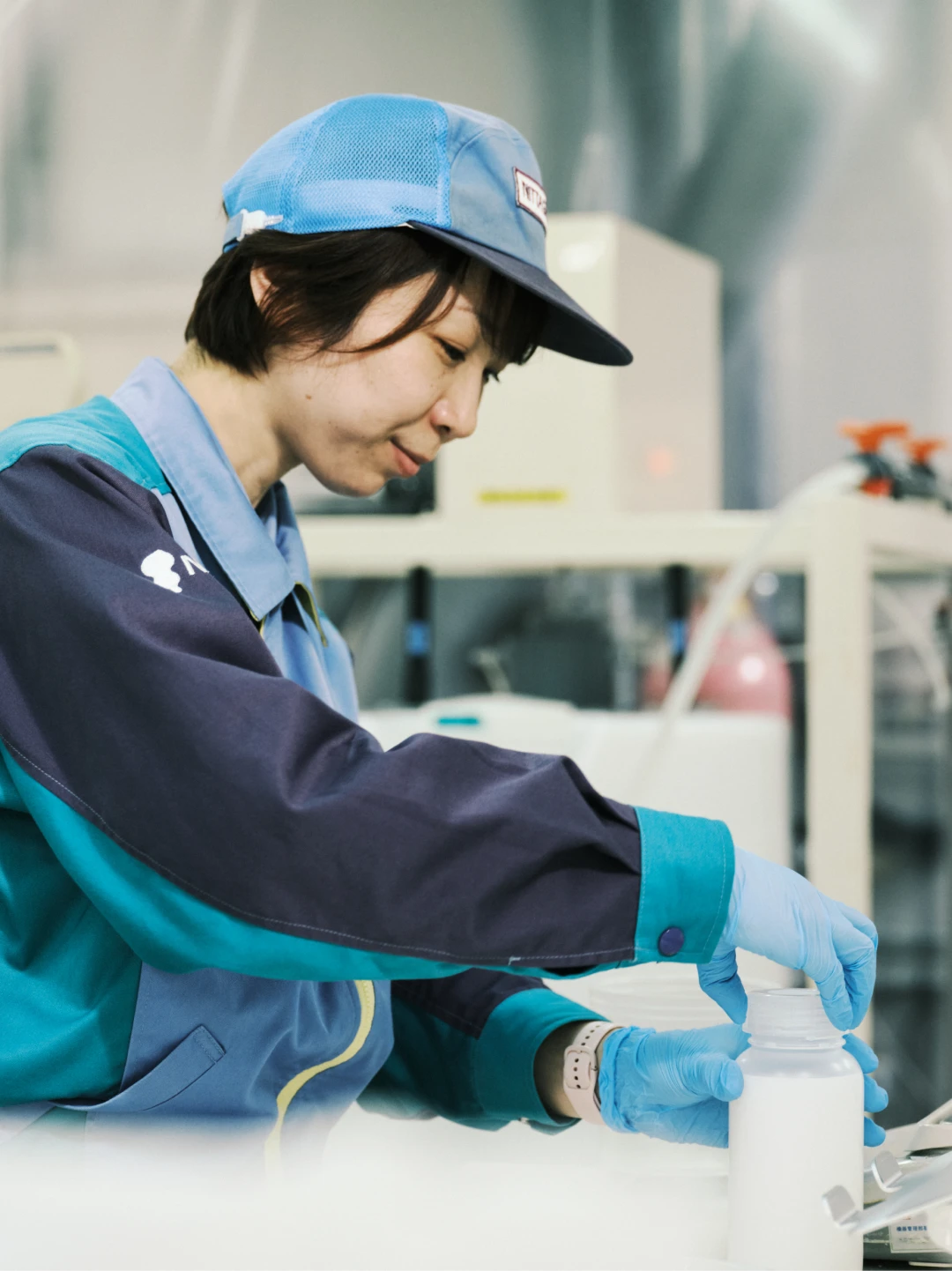
When we do decide to go forward with development, we start out by thinking about what the key issues are. Then we work with development departments and application engineers to develop concepts of what designs and changes should be used to address those issues. Once the concept has been decided, we supply or arrange for the raw materials that are needed and create a development prototype. We internally evaluate whether the development prototype offers the desired performance and we make adjustments through a repeated process of trial-and-error until we’ve developed the product we envisioned.
Our application engineers know what polishing tools our customers use and how they use them, so they help us make course adjustments so that our improvement proposals are aligned with our customers’ situations. I’m very thankful to them for this. We spend a long time developing each product, so we develop hypotheses related to our customers’ issues, and when we can produce the results we expect in-house and reproduce those same results in customer plants, I feel an unparalleled sense of accomplishment.

Polishing slurry is made up of nano-sized particles called abrasives, which are vital for polishing, and it has a delicate chemical balance. These ultra-small particles reflect light, giving the polish a translucent white appearance. Chemicals are used to soften the surface of the silicon wafer and make it easier to polish, and then this abrasive, which measures from several tens to several hundreds of nanometers, is used to polish the surface to a high level of precision. The products I develop are polishing slurries that are used after the rough polishing to perform the final polishing. A common challenge is minimizing the amount of minute, nano-scale damage to the surface of silicon wafers that have undergone polishing. Additives are used in the finishing process. They are absorbed into the surface, coating it, and prevent minute damage from the abrasive during polishing. However, if the quality of the raw material used in the additive is low, then the additive itself can cause damage, so we focus on identifying and selecting the best raw materials from the candidates that are out there. Our mission is to pursue the ultimate in performance in the nano-level world, where little deviations can produce enormous differences.
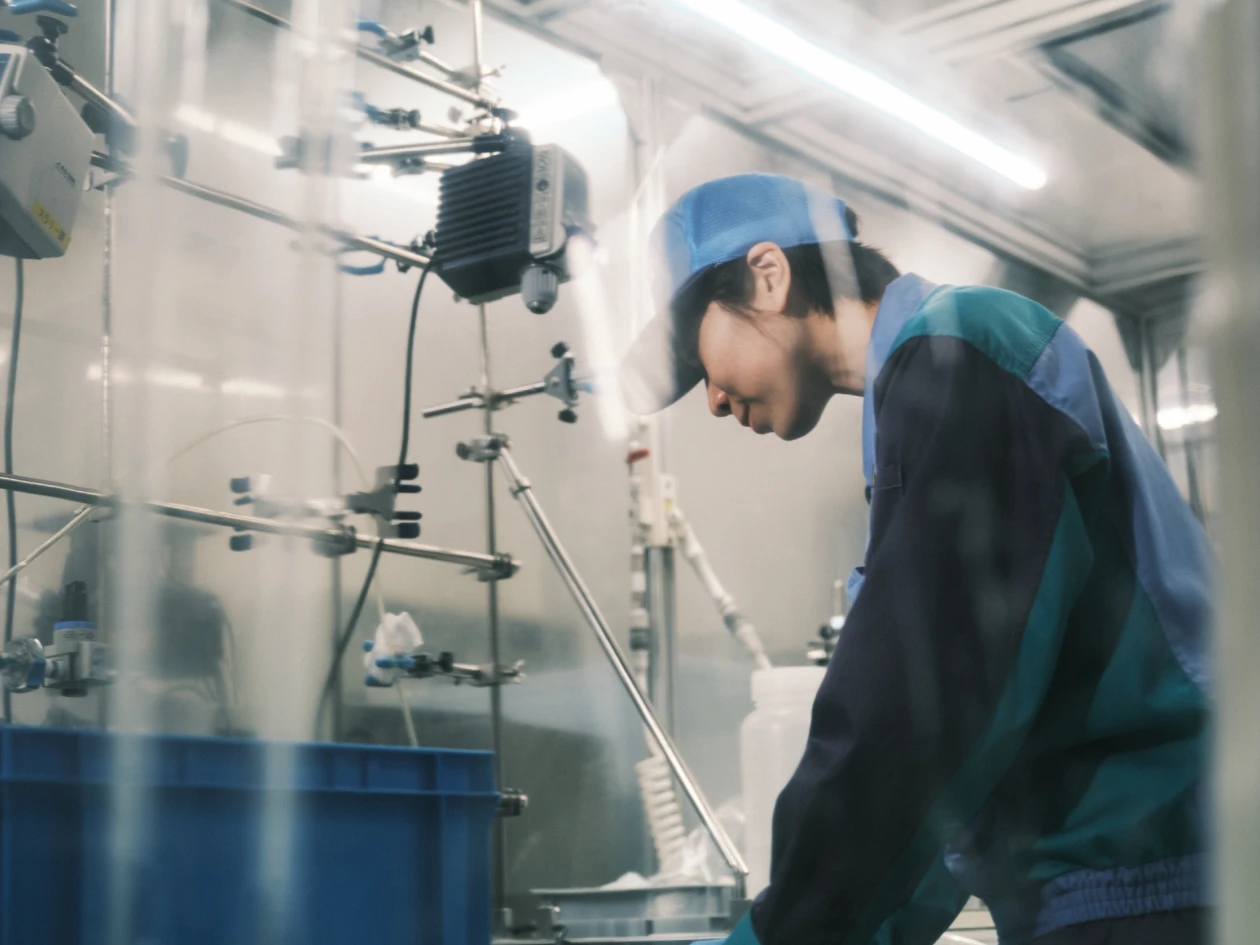
Thanks to our efforts, our polishing pads are the most highly evaluated of any in the industry. However, our polishing slurries, which I’m involved with, are in second place. Fortunately, we’ve been seeing an upswing with our slurries, as well, and I want to take on the challenge of keeping this momentum going.
The polishing slurries we’ve developed are used in the manufacturing of high-performance semiconductors, so they’re supporting our digital society through smartphones, computers, AI, and more. Thinking about that makes me even more dedicated to our mission and provides me with greater motivation. In Slurry Development Section 2, we intentionally leave our highest priority projects to our junior staff members. We do this because we want them to know that they have what it takes and to succeed, and we provide our support to help them do that. I hope each and every one of them thrives, playing a central role on the stage provided by our parent company and by major global companies.
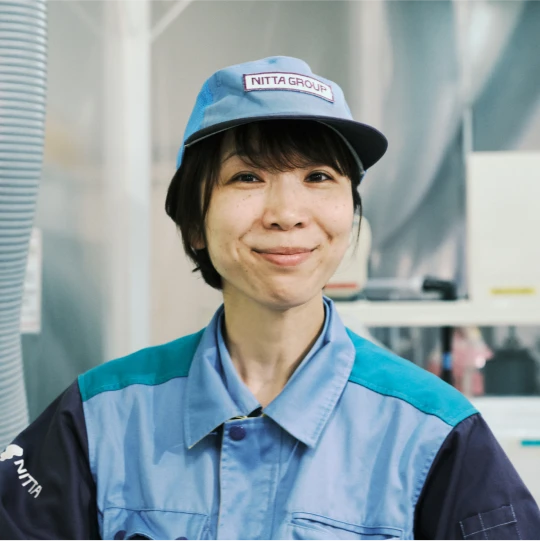
Slurry Development Department, Technology Division
NITTA DuPont
NITTA DuPont makes extremely flexible, logical, and speedy decisions. On the day I came in for my first job interview, I went all the way to being interviewed by the president. I expect that our company is going to be growing its workforce, but I hope we keep that same decision-making speed. I’m currently the head of the labor union, and when I asked for a partial continuation of our remote work approach following the pandemic, the company flexibly accommodated the request. The flexibility and rationality of our company are key reasons that I want to keep on having fun and working hard here.
